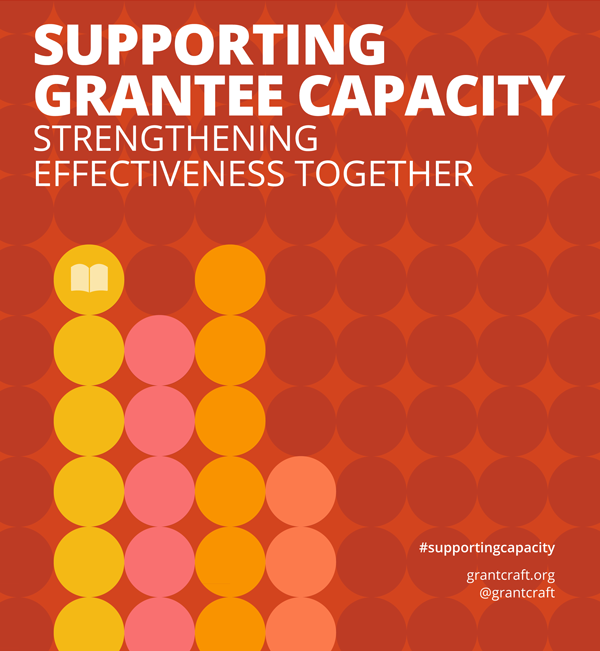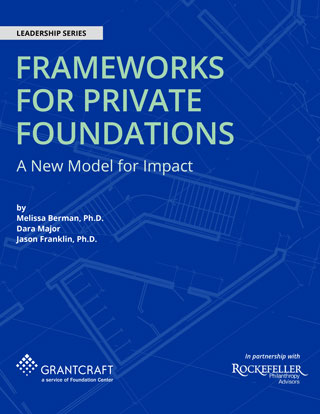Nurturing Nonprofit Boards: Funders Can Do More
 CEOs of community-based organizations are not demanding enough from their boards. Funders have an important role to play in ratcheting up the level of board commitments.
CEOs of community-based organizations are not demanding enough from their boards. Funders have an important role to play in ratcheting up the level of board commitments.
In 1998, I was honored to join the founding Board of Trustees to help start the first charter school in New York. This turned out to be a valuable lesson about the roles and responsibilities of nonprofit boards. I’d like to share some of those lessons, because it seems to me that among the many nonprofit organizations we get to know each year, not enough is being required of new and currently serving board members. Creating a cohesive and effective board requires nurturing, but it’s worth doing. In my many years leading our foundation, I've seen over and over that a passive or poorly aligned board can hinder the growth and resilience of an otherwise outstanding organization. Those of us in the funding community should bear some responsibility.
In 1998, I was a foundation leader and a litigation lawyer at a large law firm. There had been much controversy surrounding the new charter school law and charter selections. The Sisulu Children’s Academy (now called Sisulu-Walker, and thanks to those who succeeded me, it ranks among the most successful charters in New York) was to be located in the community house of a large church. I had been involved in some controversial cases involving church-state relations. As I learned, this was not coincidental—the Sisulu board was selected with a keen eye towards the needs of the fledgling school, and no one was left in doubt about their responsibilities. Our foundation was a strong supporter of alternative education initiatives (including Teach for America) and charter schools nationally, and as a litigator, I was to be there to defend the school if someone challenged its association with the church next door.
As funders, we are increasingly focused on the importance of building and maintaining a vibrant board. The bankruptcy of the New York Social Service Agency FEGS, and the ensuing publication of a troubling study by Oliver Wyman and SeaChange Capital Partners about the solvency of many nonprofits has ignited a more general discussion of risk management among foundation leaders. One of the key questions that arises is what we as funders should expect from the board of our grantees?
Over at Nonprofits with Balls, in a post titled “25 things awesome board members do,” a nonprofit leader writes of one of her board members:
“When your fundraiser is on the same night as an ice storm, he personally salts the sidewalks and parking lot. Then when all the salt runs out he goes to the gas station down the road and buys more salt to finish the job. He also demands car keys from me and my coworker at the end of the night to defrost and scrape our car windows. And somehow in the midst of all that he also pays several hundreds of dollars on an auction item and poses for tons of pictures with the kids.”
While no one expects all board members to go that far, as funders, we have a role to play in helping our grantees make tactical selections to build a strong and engaged board.
“Engagement” means more than contributing money to the organization—but financial contributions are a good place to start. As a first step, organizations should have (and funders should make sure that they have) a formal policy for board giving at a level appropriate to each board member — a minimum “give or get.” Personally, I don’t favor “give/get” as alternative obligations. I prefer give and get. There is no one who cannot give something, regardless of profession. Ideally, the minimum give should be increased over time to reflect the organization’s own growth and the board member’s growing interest and enthusiasm for the organization.
Although it can be a delicate dance for a nonprofit CEO and his or her board chair, I encourage all parties to think big. In New York, where we live, it’s no secret that the more socially prominent charities, such as museums, hospitals and leading cultural centers, require a substantial tariff from board members. Why shouldn’t community-based organizations and education nonprofits do the same? We suggest that nonprofits adopt a policy that each board member is expected to give to the organization as if it is one of their largest philanthropic donations, along with their alma matter and church or synagogue.
Lately, as we have focused on helping grantees build their boards, we’ve been having candid conversations about specific levels of support from specific board members. We want to cut through spin like “we have 100% board participation in our gala or annual fund,” which can obscure more than it reveals. We’ve been asking: “What do your board members actually give?” If the board includes people of substantial means, a list of the gifts that each board member has contributed will speak volumes about how they view the effectiveness of the organization. As a funder, I take a cue from prominent board members and wonder, “if you serve on an organization’s board yet don’t believe in it enough to be a major supporter, why should we?”
We also ask grantees to spell out the other obligations each board member fulfills in addition to giving money. If the board member is a lawyer, is he or she being required to provide pro bono advice to the organization? Is the board member being asked to identify and introduce the CEO to three to five potential new board members and three to five potential funders?
It’s important to acknowledge that CEOs can’t do this work alone. I can’t overstate the crucial role that the board chair plays in board development, engagement, and fundraising. We’ve learned that effective board chairs can make or break an organization. As funders, we like to meet with both the CEO of an organization and their board chair, to ensure the shared understanding that it’s the obligation of the board chair (not the CEO) to hold individual one-on-one meetings with each board member to discuss what is required if he or she is to join or remain on the board of the organization. This takes an enormous weight off the CEO, who is otherwise in the awkward position of having to ask his or her bosses—the board—to give more to the organization. The CEO and the board chair must work together to make sure that each board member contributes their time and money or gets off the board to make way for those who can.
As funders, it’s imperative that we support healthy organizations with strong and engaged boards. In the past, we’ve issued warnings to organizations whose boards have atrophied or who are not supporting an organization as fully as they need to. When assessing the needs of new organizations, we take a close look at the board. If it doesn’t appear to be an active board that can offer broad and deep support, we will tell those new organizations that we will not fund now, but if they engage their board, we will re-consider.
We want to invest in organizations that have the capacity to use philanthropic dollars in a way that is wise, efficient and that positively impacts the lives of vulnerable New Yorkers. A strong board gives us peace of mind that our support is well placed.




